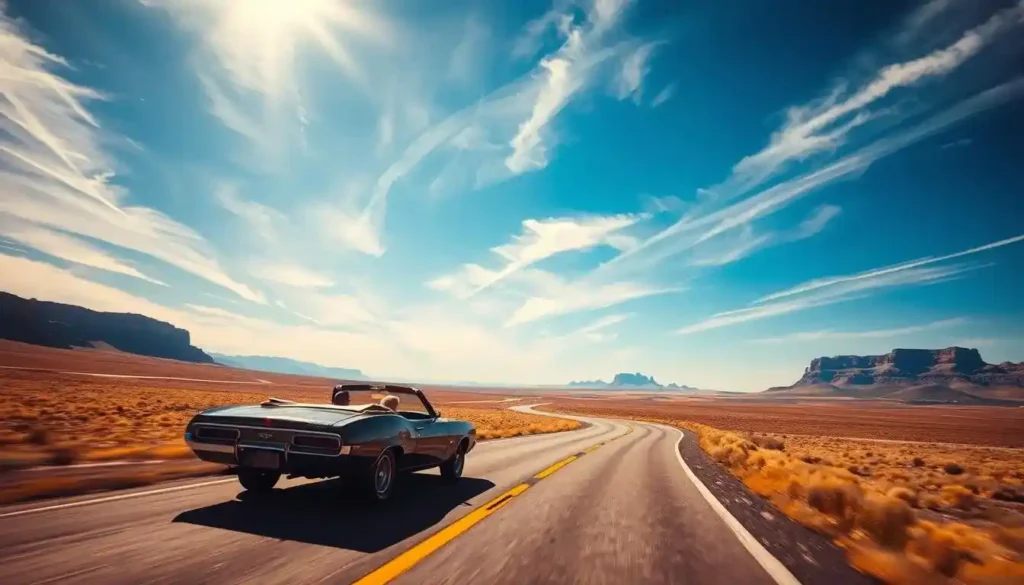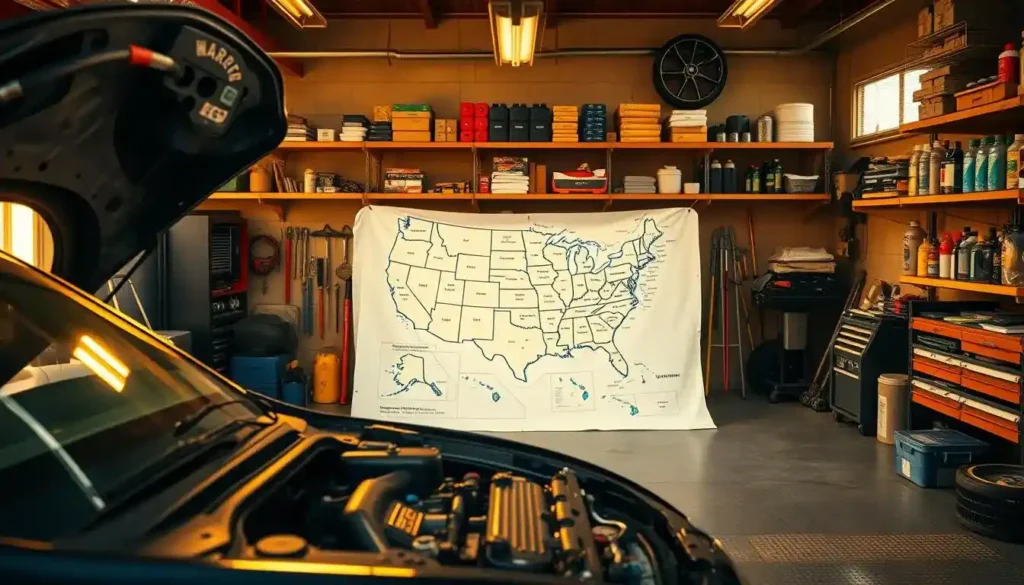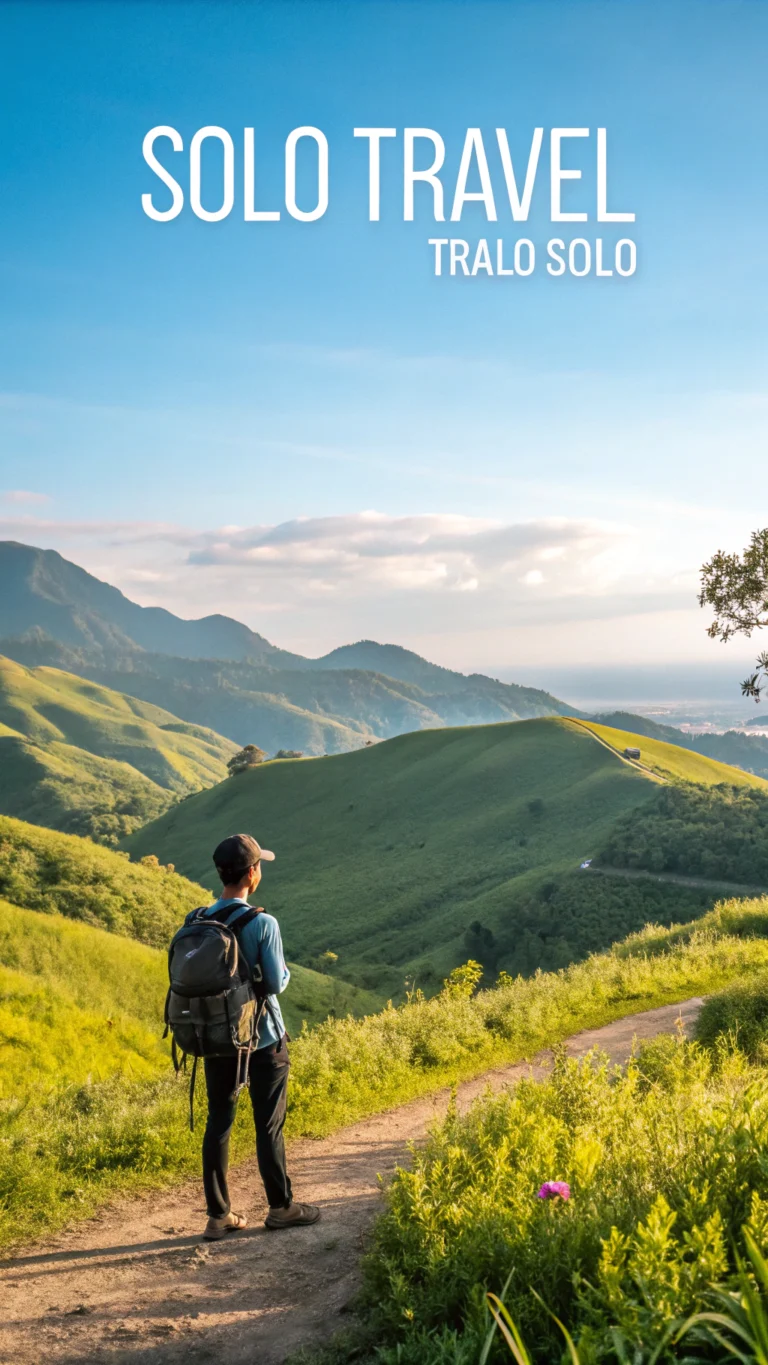Epic USA Adventures: How to Plan the Ultimate Cross-Country Road Trip
Embarking on a cross-country road trip is a quintessential American experience, offering a unique blend of freedom, adventure, and cultural immersion. The open road beckons, promising unforgettable encounters with diverse landscapes, vibrant cities, and charming towns.

Legendary USA Road Trips: Your Guide to the Ultimate Cross-Country Adventure
When organizing a journey across the United States, crafting a thoughtful itinerary is essential to uncovering the country’s lesser-known treasures. Whether it’s witnessing the awe-inspiring Grand Canyon or cruising along the iconic Route 66, the adventure lies just as much in the journey as in the destination.
Planning a successful road trip goes beyond choosing a route — it’s about designing an unforgettable experience filled with moments that will stay with you for a lifetime.
Key Highlights:
- Explore why cross-country road trips are a staple of American culture.
- Learn how to design a meaningful and enjoyable travel experience across the U.S.
- Understand how solid planning helps ensure a smooth and stress-free trip.
- Discover the unique benefits of exploring the U.S. by road.
- Gain practical tips for building the ultimate cross-country travel itinerary.
The American Road Trip Dream: Why Go Cross-Country
Embarking on a cross-country road trip is a quintessential American experience that offers a unique blend of freedom and adventure. The open road beckons, promising a journey of discovery through diverse landscapes and cultures.
The Cultural Significance of Road Trips in America
Road trips have become an integral part of American culture, symbolizing freedom and the joy of exploration. This cultural phenomenon is deeply rooted in the country’s history and geography, reflecting the American spirit of adventure and the desire for new experiences.
Benefits of Experiencing the Country by Road
Traveling by road offers the flexibility to create your own itinerary, allowing you to explore hidden gems and unexpected attractions along the way. The USA road trip benefits are numerous, including the opportunity to experience the country’s diverse landscapes, from coastal highways to mountainous terrains, and to engage with local cultures.
What Makes Cross-Country Road Trips Unique
Cross-country road trips stand out due to the variety of experiences they offer, from urban excitement to rural tranquility. Travelers can enjoy the USA road trip benefits, such as visiting iconic landmarks, trying local cuisine, and meeting people from different backgrounds.
| Aspect | Description | Benefits |
| Cultural Experience | Engage with local cultures and communities | Enhanced understanding and appreciation of American diversity |
| Landscape Diversity | Explore varied landscapes across the country | Unforgettable scenic views and memorable experiences |
| Flexibility | Create your own itinerary and travel at your own pace | Personalized adventure with the freedom to make spontaneous stops |
Epic USA Adventures: Planning the Perfect Cross-Country Road Trip
To make your cross-country road trip unforgettable, everything starts with a solid plan. A well-crafted itinerary can be the key factor that turns a decent trip into an extraordinary adventure.
Defining Your Road Trip Goals and Expectations
Before hitting the road, take time to clarify what you hope to get out of the journey. Are you craving adventure, seeking relaxation, or looking to immerse yourself in local culture? Knowing your goals will help you design a trip that truly fits your vision.
If you’re traveling with friends or family, be sure to consider everyone’s interests and preferences. A balanced plan that caters to all travelers ensures the experience is enjoyable for everyone involved.
Determining the Best Time of Year to Travel
The United States is a vast country with diverse climates and weather conditions. Choosing the right time to travel can significantly impact your experience. For instance, visiting national parks during spring or fall can be particularly enjoyable due to the mild weather.
Here’s a table summarizing the best times to visit different regions in the USA:
| Region | Best Time to Visit |
| Northeast | September to November or March to May |
| South | October to April |
| West Coast | Year-round, but avoid peak summer for popular destinations |
How Long You’ll Need for a Complete Experience
The duration of your trip depends on several factors, including the distance, the number of stops, and your travel style. A general rule of thumb is to allocate at least 2-3 weeks for a cross-country trip to allow for a leisurely pace and unexpected detours.
“The journey of a thousand miles begins with a single step.” – Lao Tzu
Planning the duration of your trip carefully will help ensure that you have a complete and enjoyable experience without feeling rushed.
Mapping Your Route: Famous Highways and Scenic Byways
A cross-country road trip across the USA is a journey of a lifetime, with famous highways and scenic byways waiting to be explored. The country’s diverse landscapes, from the rugged coastlines to the majestic mountains, offer a kaleidoscope of experiences that can be tailored to any traveler’s interests.
Iconic Road Trip Routes: Route 66, the Pacific Coast Highway, and Blue Ridge Parkway
The United States boasts some of the most legendary road trip routes in the world. Route 66 — famously known as the “Mother Road” — is a timeless symbol of freedom and Americana, linking Chicago to Los Angeles with a trail of nostalgia and cultural landmarks. For those craving ocean views, California’s Pacific Coast Highway delivers stunning coastal scenery at every turn. Meanwhile, the Blue Ridge Parkway winds through the Appalachian Mountains, offering a peaceful, scenic escape into nature.
These classic drives showcase the incredible variety of the American landscape — from bustling cities to serene countryside. As highlighted by National Geographic, road trips offer a unique way to explore the rich geographic and cultural diversity the U.S. has to offer. Each of these routes invites travelers into a one-of-a-kind blend of scenic beauty, vibrant history, and unforgettable experiences.
Coast-to-Coast Options: Northern, Central, and Southern Routes
When planning a cross-country trip, choosing the right coast-to-coast route is crucial. The Northern Route takes you through the rugged terrains of the north, offering stunning views of the Great Lakes and the Rocky Mountains. The Central Route passes through the heart of America, featuring iconic cities and historical landmarks. The Southern Route is known for its warm hospitality and rich musical heritage, particularly in New Orleans and Nashville.
Creating a Flexible Itinerary with Must-See Stops
A successful road trip requires a balance between planning and flexibility. While it’s essential to identify must-see stops along your route, leaving some room for spontaneity can lead to unexpected adventures.
“The journey is the reward,” as the saying goes, emphasizing the importance of enjoying the trip as much as the destinations.
Incorporating a mix of planned attractions and free time can make your road trip truly unforgettable.
By carefully mapping your route and choosing the right mix of famous highways and scenic byways, you can create a cross-country road trip that is both memorable and enjoyable.
Preparing Your Vehicle for the Long Haul
As you plan your ultimate USA road trip, preparing your vehicle for the long haul is a critical step you can’t afford to overlook. A well-prepared vehicle ensures your safety, comfort, and peace of mind throughout your journey.
Pre-Trip Maintenance Checklist
Before hitting the road, it’s essential to give your vehicle a thorough check-up. This includes:
- Checking the oil and coolant levels
- Inspecting tire pressure and tread depth
- Ensuring all lights and signals are functioning
- Replacing worn-out brake pads
- Checking the battery condition
Regular maintenance not only prevents breakdowns but also improves fuel efficiency.
To Rent or Drive Your Own: Pros and Cons
Deciding whether to rent a vehicle or use your own depends on several factors. Renting offers the advantage of having a newer vehicle with the latest safety features and potentially better fuel efficiency. On the other hand, using your own vehicle can be more cost-effective if it’s well-maintained. Consider your specific needs, budget, and preferences when making this decision.
Essential Vehicle Equipment and Emergency Supplies
Regardless of whether you’re renting or using your own vehicle, it’s crucial to be prepared with the right equipment and supplies. This includes a spare tire, jumper cables, a first-aid kit, and a basic toolkit. Consider investing in a roadside emergency kit that includes items like flashlights, reflective triangles, and a fire extinguisher.

road trip preparation
By focusing on vehicle preparation, you can significantly enhance your road trip experience, ensuring it’s both enjoyable and safe.
Budgeting for Your Cross-Country Adventure
The key to a stress-free cross-country road trip lies in effective budgeting, which enables you to enjoy the journey without financial worries. A well-planned budget helps in managing expenses, ensuring that you can focus on the adventure rather than worrying about the costs.
Estimating Fuel, Food, and Accommodation Costs
To start budgeting, you need to estimate your major expenses: fuel, food, and accommodations. Fuel costs can be estimated by checking your vehicle’s fuel efficiency and the total distance of your trip. Food expenses vary widely depending on whether you plan to cook your meals or dine out. Accommodation costs can range from budget-friendly options like hostels and camping to luxury hotels.
| Expense Category | Budget Estimate | Luxury Estimate |
| Fuel | $200 | $300 |
| Food | $300 | $600 |
| Accommodation | $400 | $800 |
Saving Money on the Road: Tips and Tricks
Saving money on the road requires some planning and flexibility. Consider using gas-saving apps to find the cheapest fuel stations, and opt for accommodations that offer free breakfast or other perks. Cooking your meals instead of eating out can also significantly reduce expenses.
Building in a Buffer for Unexpected Expenses
No matter how well you plan, unexpected expenses can arise. It’s wise to build a financial buffer into your budget to cover emergencies like car repairs or medical expenses. A general rule of thumb is to add 10-20% to your total budget for contingencies.
By carefully estimating costs, employing cost-saving strategies, and preparing for the unexpected, you can enjoy a fulfilling cross-country road trip without breaking the bank.
Travel Companions and Special Considerations
Whether you’re planning a road trip with family, friends, or flying solo, understanding the unique considerations for each group is crucial. The dynamics of your travel companions can significantly influence the planning and enjoyment of your trip.
Road Tripping with Family vs. Friends vs. Solo
Traveling with family involves considering the needs of all ages, from young children to elderly members. This might include planning for kid-friendly attractions and ensuring that accommodations are suitable for everyone. On the other hand, road tripping with friends is often about shared experiences and adventures, requiring a different set of considerations such as budgeting and activity planning. Solo travelers, however, have the flexibility to create their itinerary based solely on their preferences, but they should also take extra precautions for safety.
Each type of travel companionship offers a unique experience. For instance, family road trips can strengthen bonds and create lifelong memories, while traveling with friends can be a great way to reignite friendships. Solo travel, meanwhile, offers an opportunity for self-discovery and personal growth.
Bringing Pets Along: What You Need to Know
If you’re considering bringing your pets along on your road trip, there are several factors to consider. First, ensure your pet is comfortable in a vehicle and plan for regular breaks for exercise and relief. Research pet-friendly accommodations and attractions along your route. Additionally, make sure your pet’s vaccinations are up to date, and consider investing in pet insurance that covers emergency vet visits.
Pet owners should also prepare a pet emergency kit that includes essentials like food, water, bowls, and any necessary medication. Planning ahead can make the journey enjoyable for both you and your pet.
Documentation, Insurance, and Legal Considerations
Before embarking on your trip, ensure you have all necessary documentation, including a valid driver’s license, vehicle registration, and car insurance. If you’re renting a vehicle, understand the rental agreement’s terms and conditions. Consider purchasing travel insurance that covers trip cancellations, interruptions, and medical emergencies.
It’s also wise to research the laws and regulations of the states you’ll be traveling through, including those related to vehicle inspections, tolls, and any specific requirements for out-of-state drivers.

road trip planning
By carefully considering your travel companions and the special needs associated with them, you can ensure a more enjoyable and stress-free cross-country road trip.
Must-Visit Destinations Across America
With its rich history, stunning landscapes, and eclectic culture, the USA is a treasure trove of must-visit destinations. As you plan your cross-country road trip, you’ll want to include a mix of the country’s most iconic and awe-inspiring places.
National Parks and Natural Wonders
The United States is home to some of the world’s most spectacular natural wonders, including the Grand Canyon, Yellowstone, and Yosemite National Parks. These national parks offer breathtaking landscapes, diverse wildlife, and a range of outdoor activities.
Iconic Cities and Cultural Hotspots
From the bright lights of New York City to the jazz clubs of New Orleans, America’s cities are vibrant hubs of culture and entertainment. Don’t miss the opportunity to visit iconic cities like San Francisco, Chicago, and Miami, each offering a unique blend of history, cuisine, and nightlife.
Regional Highlights: East, West, South, and Midwest
Each region of the USA has its own distinct character and attractions. The East Coast is home to historic sites like Boston and Philadelphia, while the West Coast boasts stunning natural beauty and cities like Los Angeles and Seattle. The South is known for its warm hospitality and rich musical heritage, and the Midwest offers a mix of urban excitement and rural charm.
Hidden Gems Worth the Detour
While many of America’s top destinations are well-known, there are also plenty of hidden gems worth exploring. Consider visiting the quirky town of Asheville, North Carolina, or the scenic coastal routes of Oregon. These off-the-beaten-path destinations can add a unique touch to your road trip adventure.
As you map out your road trip itinerary, be sure to include a mix of these must-visit destinations and hidden gems. Whether you’re drawn to natural wonders, cultural hotspots, or regional highlights, America has something for every kind of traveler.
Tech Tools and Apps for the Modern Road Tripper
As you prepare for your epic USA adventure, leveraging the right tech tools and apps can significantly elevate your road trip experience. The modern road tripper has access to a myriad of applications designed to make traveling across America more enjoyable and stress-free.
Navigation and Route Planning Apps
Effective navigation is crucial for a successful road trip. Apps like Google Maps and Waze have become indispensable for their real-time traffic updates and route optimization capabilities. Google Maps offers detailed maps and Street View, helping you visualize your route and stops along the way.
Waze, on the other hand, is renowned for its community-driven updates, providing insights into traffic congestion, road closures, and speed traps.
Finding Gas, Food, and Lodging on the Go
Discovering amenities on the road is made easy with apps like GasBuddy for fuel, TripAdvisor for dining and lodging recommendations, and Booking.com for hotel reservations. These apps ensure that you can find the best places to refuel, eat, and rest, enhancing your overall travel experience.
Entertainment and Communication on the Road
Long drives can be entertaining with the right apps. Spotify and Apple Music offer vast music libraries, while Podcasts and Audible provide a range of audiobooks and podcasts to keep you engaged. For staying connected, apps like WhatsApp and Facebook Messenger are invaluable.
Conclusion: Embracing the Journey of a Lifetime
As you embark on your epic USA adventure, remember that the journey is just as important as the destination. A cross-country road trip is a unique opportunity to experience the diverse landscapes, cultures, and communities that make America so fascinating. To make the most of your trip, stay open to new experiences, take time to appreciate the scenic views, and engage with the people you meet along the way.
Creating lasting travel memories is a significant part of any road trip conclusion. Whether it’s watching the sunrise over the Grand Canyon, exploring the vibrant streets of New Orleans, or simply enjoying a quiet moment at a roadside diner, these experiences will stay with you long after your journey ends. So, be present, be curious, and let the adventure unfold.
With careful planning, the right mindset, and a willingness to embrace the unknown, your USA adventure will be a journey of a lifetime. So pack your bags, hit the road, and get ready to make memories that will last a lifetime on your cross-country road trip.
FAQ
What are the best times of the year to embark on a cross-country road trip in the USA?
The best times for a cross-country road trip in the USA are typically during the spring (April-May) and autumn (September-October), when the weather is generally mild and there are fewer tourists than in the peak summer months.
How long does it take to complete a cross-country road trip across America?
The duration of a cross-country road trip depends on the route taken, the number of stops, and the travel style. On average, it can take around 2-4 weeks to complete, assuming you’re driving around 300-500 miles per day.
What are some must-see destinations on a cross-country road trip?
Some of the top destinations include national parks like the Grand Canyon, Yellowstone, and Yosemite, as well as iconic cities like New York City, San Francisco, and New Orleans. Don’t miss the Pacific Coast Highway, Route 66, and the Blue Ridge Parkway for scenic drives.
How do I prepare my vehicle for a long road trip?
To prepare your vehicle, check the oil, tire pressure, brakes, and suspension. Ensure all lights are functioning, and consider a maintenance check by a mechanic. Pack an emergency kit with essentials like jumper cables, a spare tire, and first-aid supplies.
Can I take my pet on a cross-country road trip?
Yes, you can take your pet on a cross-country road trip, but it’s crucial to plan ahead. Research pet-friendly accommodations, restaurants, and attractions. Ensure your pet is healthy enough for travel and has the necessary vaccinations and documentation.
What are the essential tech tools and apps for a modern road tripper?
Essential tech tools include navigation apps like Google Maps and Waze, as well as apps for finding gas stations, food, and lodging like GasBuddy and Booking.com. Entertainment apps like Spotify and Audible can also enhance the travel experience.
How can I save money on a cross-country road trip?
To save money, plan your route and accommodations in advance, use travel apps to find deals, and consider budget-friendly options like camping or hostels. Pack snacks and cook your own meals instead of relying on restaurants.
What kind of documentation and insurance do I need for a cross-country road trip?
Ensure you have a valid driver’s license, vehicle registration, and car insurance. If you’re renting a vehicle, check the rental company’s insurance options. Consider purchasing roadside assistance and travel insurance for added protection.
How do I handle unexpected expenses during a road trip?
To handle unexpected expenses, build a financial buffer into your budget. Prioritize your spending, and be prepared to adjust your itinerary if needed. Keep emergency funds or a credit card for unexpected costs like car repairs or medical expenses.







